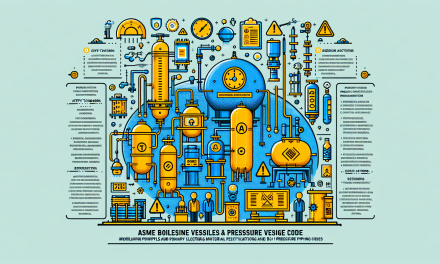Table of Contents
- Introduction
- What is Decision Analysis?
- The Importance of Decision Analysis in Operations
- Techniques for Effective Decision Analysis
- Implementation Strategies for O&M Professionals
- Common Challenges in Decision Analysis
- Best Practices to Enhance Your Decision-Making
- Frequently Asked Questions
- Conclusion
Introduction
In the rapidly evolving fields of operations and maintenance (O&M), professionals face numerous challenges that require sharp decision-making skills. From selecting the right maintenance strategies to optimizing resource allocation, decision analysis plays a crucial role. Understanding how to apply decision analysis effectively can lead to improved operational efficiency and reduced costs.
What is Decision Analysis?
Decision analysis is a systematic approach used to evaluate complex choices, taking into account various uncertainties and factors. It involves quantifying the potential outcomes of decisions and analyzing them to make informed choices. By utilizing quantitative methods, decision analysis helps in making choices that align with organizational goals.
Key Components of Decision Analysis
- Data Collection: Gathering relevant data is essential for making informed decisions. This includes historical data, performance metrics, and operational statistics.
- Modeling Scenarios: Creating models to simulate different scenarios helps in assessing possible outcomes and their implications.
- Evaluating Alternatives: Comparing various alternatives based on criteria such as cost, risk, and return on investment allows professionals to select the best option.
- Implementing Decisions: The final step involves executing the chosen decision and monitoring its effectiveness.
The Importance of Decision Analysis in Operations
Effective decision analysis yields multiple benefits in operations management. First and foremost, it leads to enhanced reliability of systems by guiding maintenance strategies, thereby reducing unplanned downtime. Furthermore, decision analysis aligns maintenance activities with organizational objectives, resulting in improved resource utilization.
Enhancing Decision Quality
High-quality decisions stem from a comprehensive analysis of possible scenarios. When O&M professionals rely on empirical data and analytical models, they can anticipate the impact of their choices more accurately, allowing for more robust operational planning.
Case Studies in Decision Analysis
Real-world case studies exemplify the advantages of decision analysis in operations. For instance, a manufacturing firm implemented decision analysis techniques to optimize its preventive maintenance schedule. As a result, they experienced a 15% reduction in operational costs while significantly increasing overall equipment effectiveness.
Techniques for Effective Decision Analysis
Several techniques can be employed in decision analysis, each offering unique insights tailored to different scenarios. Here are some popular methods:
1. Cost-Benefit Analysis
Cost-benefit analysis compares the expected costs of a decision to its anticipated benefits. This method provides a clear visualization of whether a specific choice is financially viable.
2. Decision Trees
Decision trees graphically represent choices and their potential consequences. They serve as a visual aid in weighing different options, ultimately allowing for clearer decision-making.
3. Monte Carlo Simulation
This technique incorporates randomness into decision-making by simulating different scenarios thousands of times. It provides insights into potential outcomes under varying conditions, which is invaluable when dealing with uncertainty.
Implementation Strategies for O&M Professionals
While understanding decision analysis techniques is important, implementing them effectively is crucial. Here are several strategies to ensure success:
1. Training and Development
Regular training sessions focusing on decision analysis methods and techniques empower professionals to make data-driven decisions. Resources like Decision Analysis in Operations: Enhance Maintenance Management can serve as excellent materials for skill enhancement.
2. Fostering a Collaborative Culture
Encouraging teamwork enhances the decision-making process by integrating diverse perspectives. Collaborative brainstorming sessions can lead to innovative solutions that individuals may overlook.
3. Utilizing Technology
Employing software tools for data analysis contributes to more accurate and timely decision-making. These tools facilitate real-time data analysis and display critical information visually, which helps in better understanding and quicker decisions.
Common Challenges in Decision Analysis
Despite its advantages, decision analysis is not without challenges. Here are a few common hurdles that professionals encounter:
1. Data Quality Issues
Accessing quality data is fundamental for effective decision analysis. Inaccurate or incomplete data can skew the results and lead to poor decisions.
2. Resistance to Change
Implementing new decision analysis strategies may face resistance from team members who are accustomed to traditional methods. Overcoming this requires clear communication about the benefits of decision analysis.
3. Complexity of Scenarios
Some scenarios are too complex to model effectively. In such cases, simplifying assumptions may lead to oversimplification of reality, affecting decision-making accuracy.
Best Practices to Enhance Your Decision-Making
To amplify the effectiveness of decision analysis, it’s vital to adhere to best practices:
1. Continuously Update Your Data
Always ensure that the data being used for decision analysis is current. Outdated data can produce misleading outcomes and poor choices.
2. Document the Decision-Making Process
Record the steps taken during the decision-making process. This documentation can serve as a reference for future decisions and help identify areas for improvement.
3. Review Outcomes Regularly
Post-decision reviews allow for reflection on the efficacy of the decisions made. By analyzing outcomes, O&M professionals can learn and refine their decision-making skills.
Frequently Asked Questions
What are the primary benefits of decision analysis?
Decision analysis enhances decision quality, improves resource allocation, and reduces costs by providing a structured approach to evaluating choices and their potential outcomes.
How can decision analysis improve maintenance management?
By utilizing decision analysis, maintenance managers can prioritize tasks based on risk and potential impact, leading to better planning and execution of maintenance activities.
Are there specific tools for decision analysis?
Absolutely! Various tools exist, including software for cost-benefit analysis, decision trees, and Monte Carlo simulations to facilitate effective decision-making.
Conclusion
In conclusion, decision analysis offers powerful strategies for O&M professionals seeking to enhance operational efficiency and reliability. By applying the techniques and best practices discussed, organizations can achieve higher-quality decisions that align with their strategic objectives. Ultimately, this leads to improved maintenance management and operational excellence. For further insights, be sure to explore resources on effective maintenance management techniques here, best practices for success here, and the art of writing effective maintenance procedures here. Furthermore, gaining insights into maintenance audits here as well as technology best practices for operational excellence here can enrich your knowledge and expertise in this vital area.





